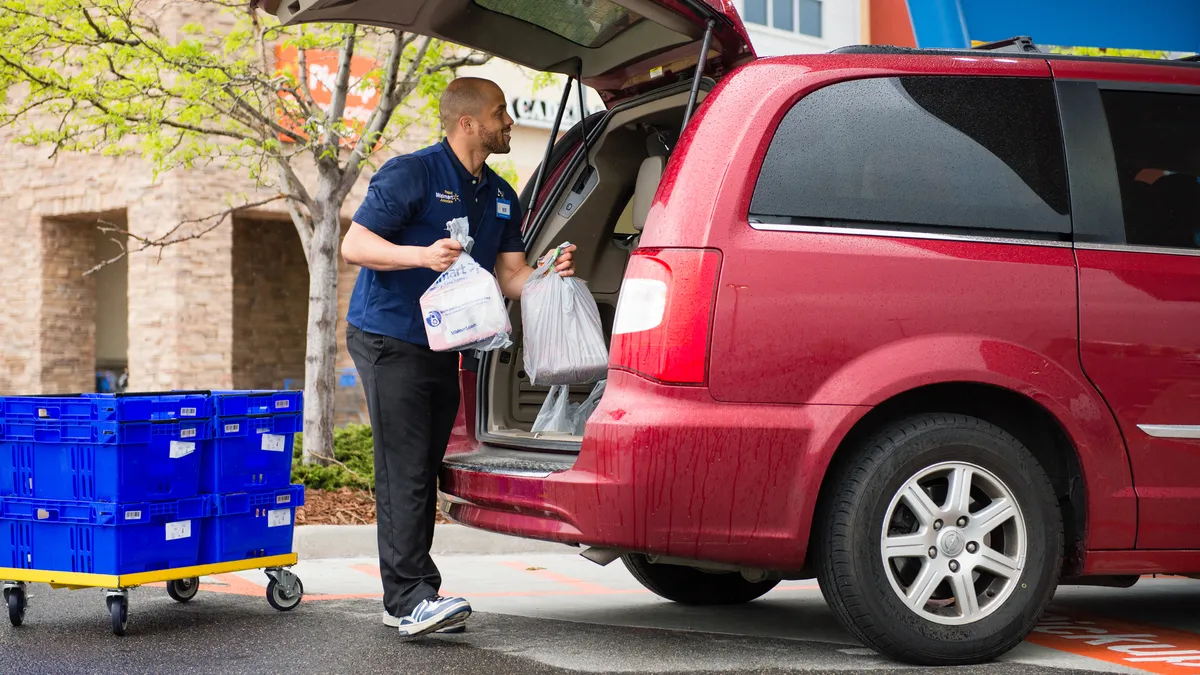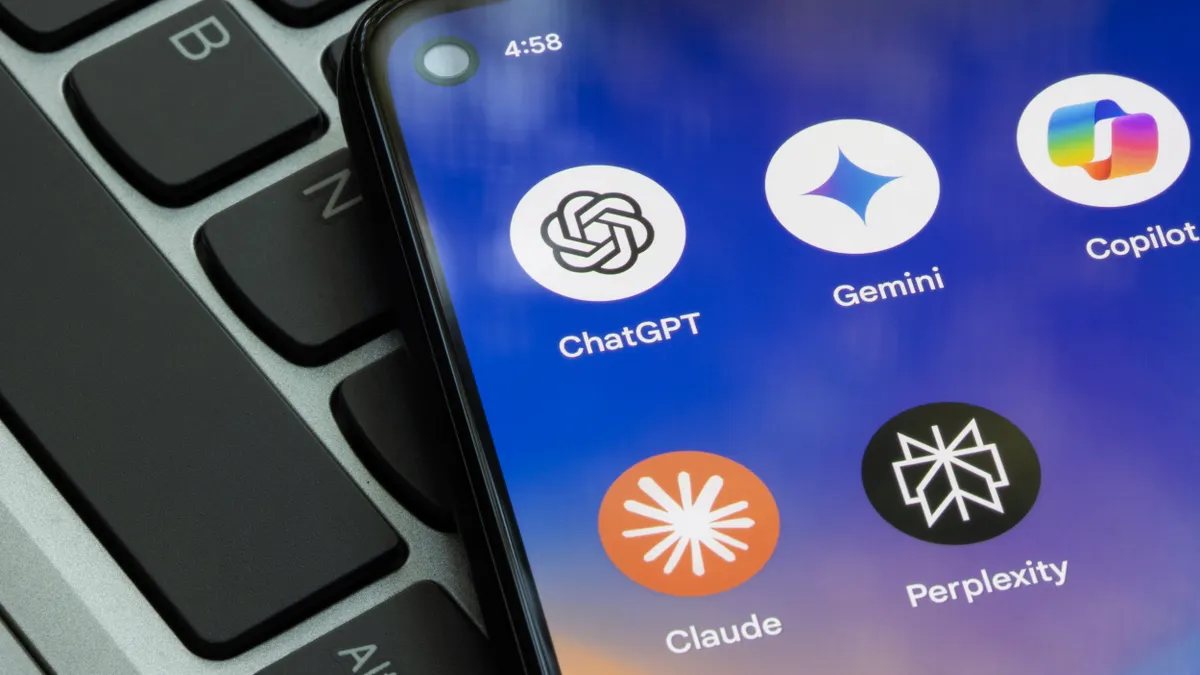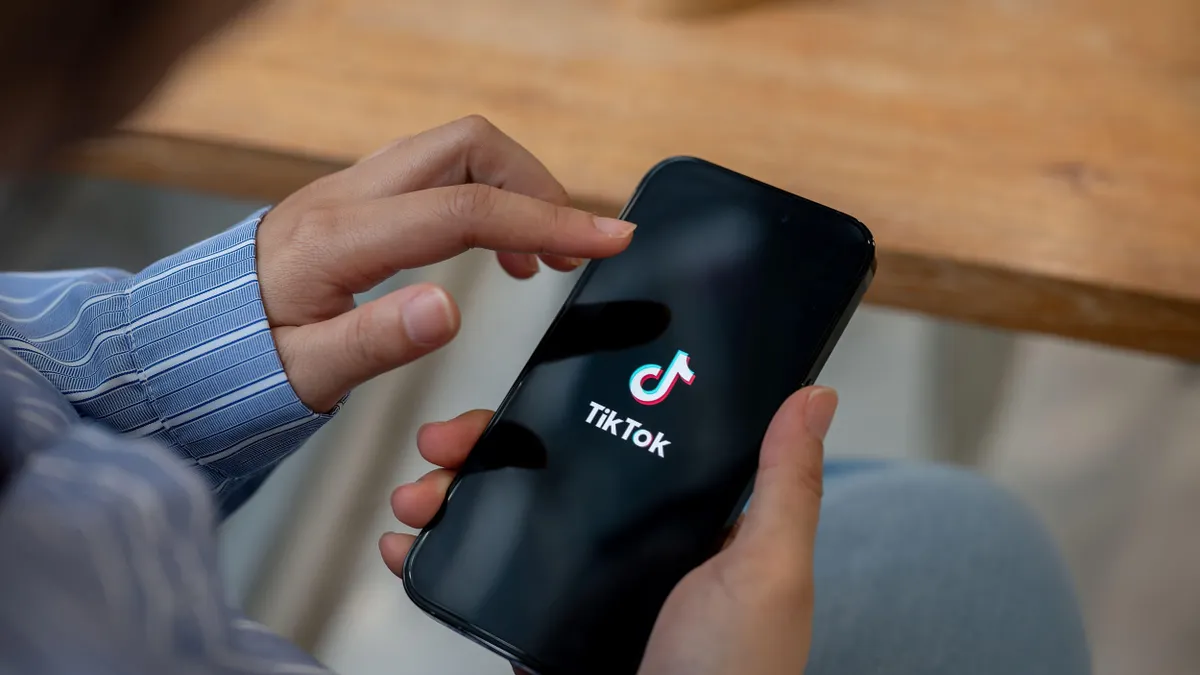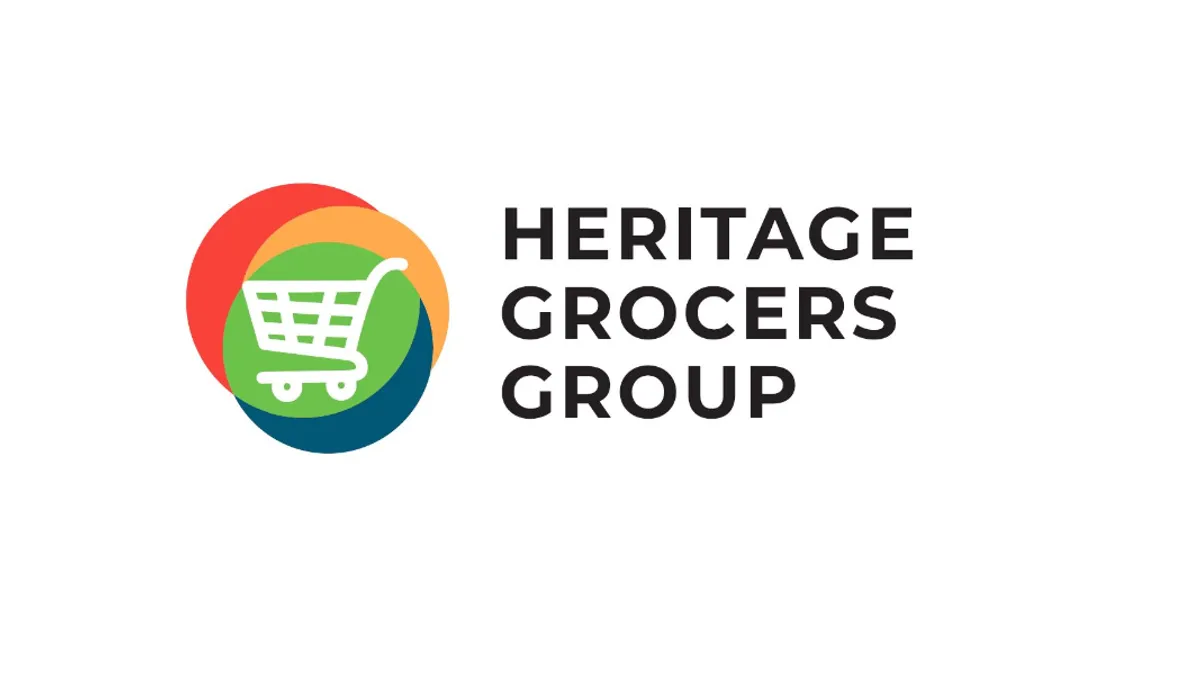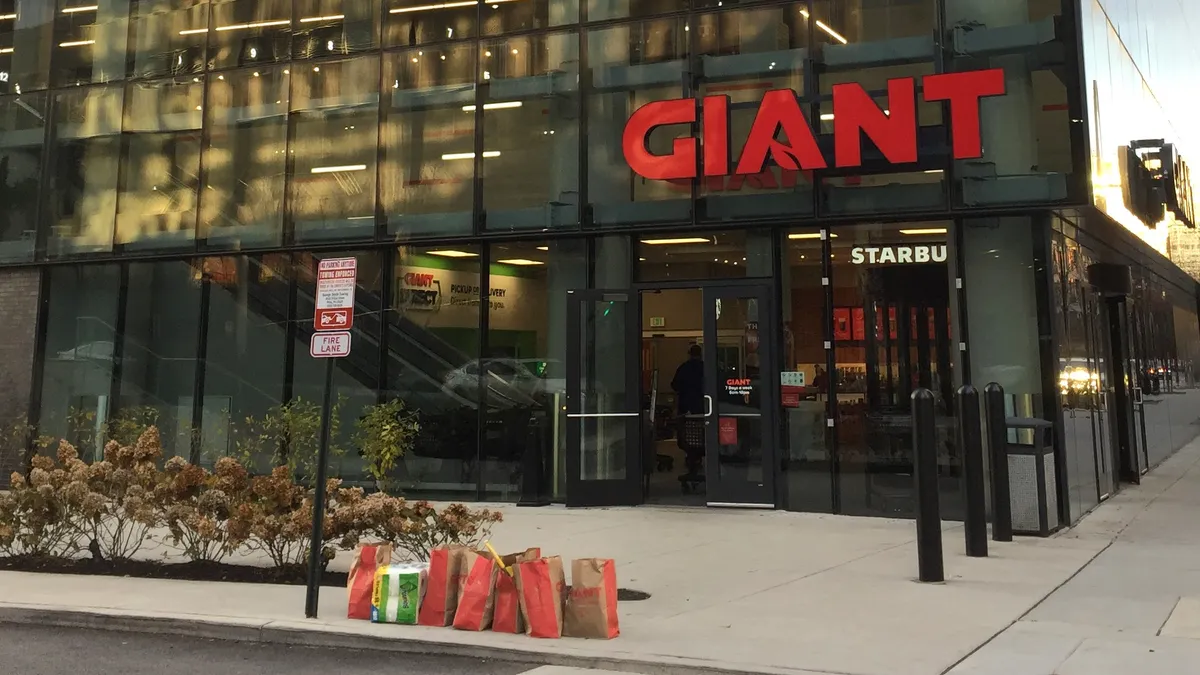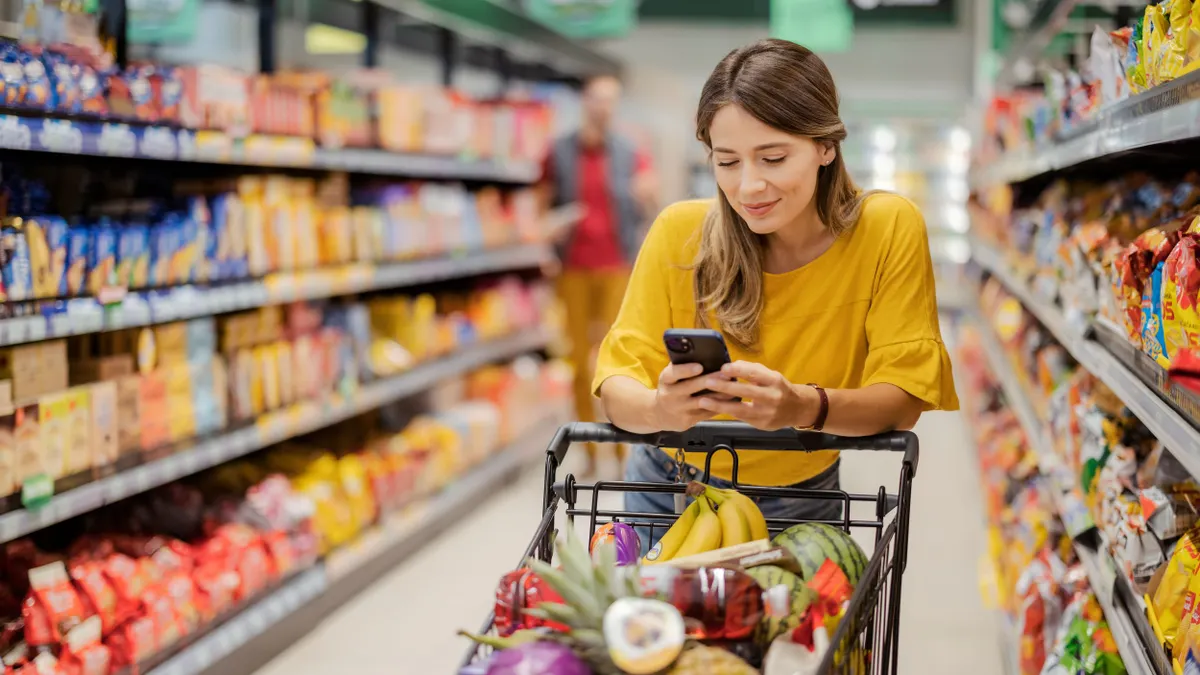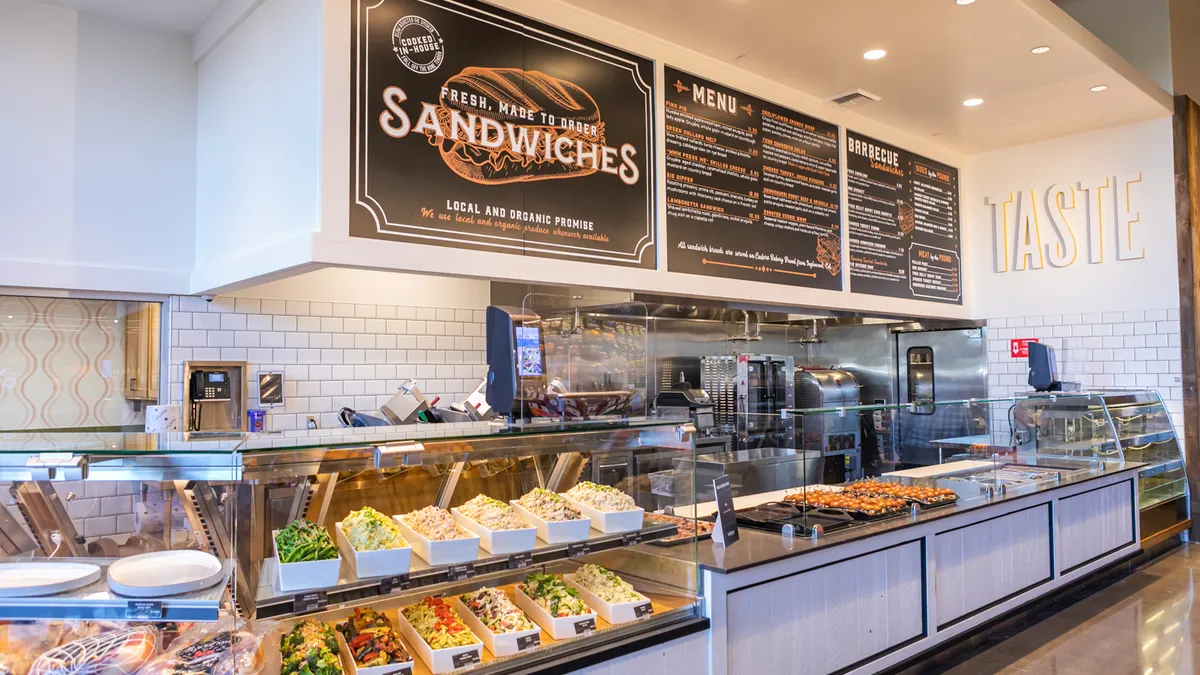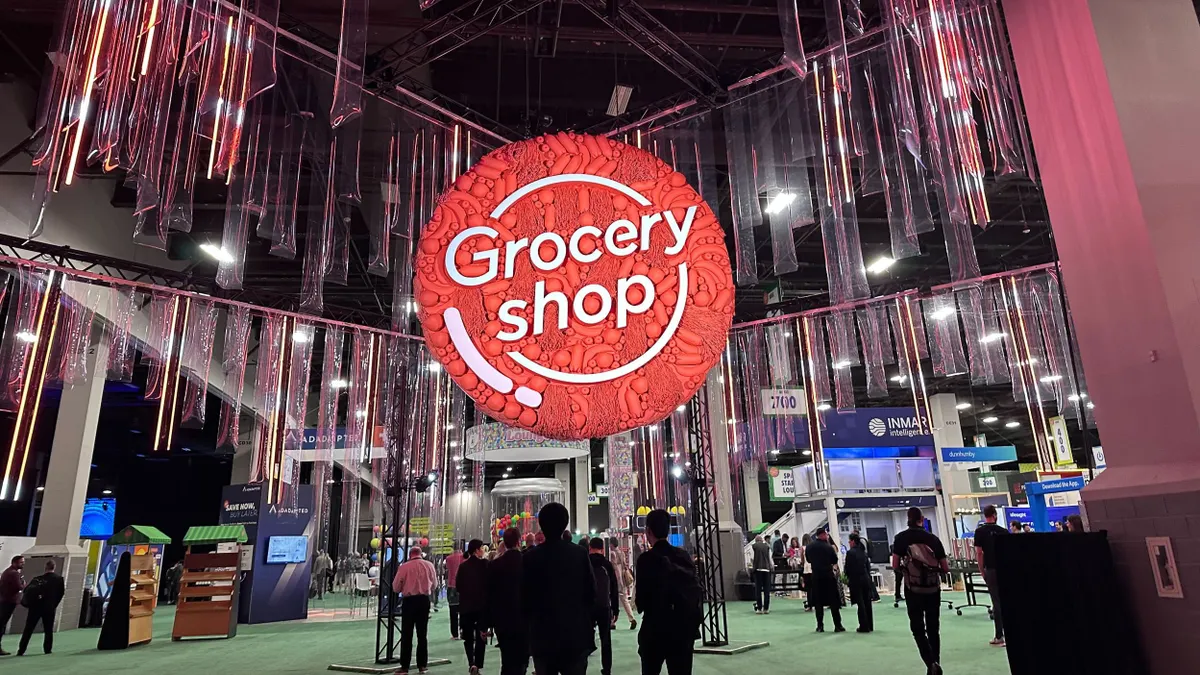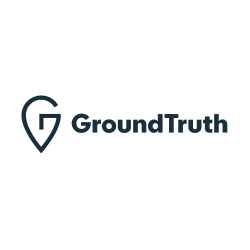LAS VEGAS — Make no mistake about it, according to industry analysts speaking at the inaugural Groceryshop conference: Online grocery sales will accelerate in the coming years, becoming a motivating force for consumers that retailers need to try to solve or suffer the consequences.
Despite some skepticism around recent growth projections and hefty investments from the likes of Kroger and Walmart, experts say these grocers and many others are feeding a growing wave of demand. True, that demand right now is small, with more than three quarters of consumers saying they don't shop for food and beverages online, and estimates placing total market share for the channel somewhere around 2%.
But according to IGD, a nonprofit research and training organization, sales are set to snowball in the coming years as innovation and consumer expectations continue to evolve. The firm projects that online grocery market share in the U.S. will nearly double over the next five years, rising from 1.6% currently to 3.5%. In that time, sales will grow from $24 billion to $59.5 billion. Only China, with its runaway middle-class growth, is expected to see a higher sales increase.
The projection is more conservative than the oft-cited $100 billion figure put out by the Food Marketing Institute and Nielsen. But that shouldn't diminish the pace of growth, which is set to be higher than any other retail sector.
"Online really is the only channel in developed grocery markets that is offering that sort of growth opportunity," said Ben Miller, IGD's global insight director, during a presentation.
Innovation like automation, voice ordering and nimbler online platforms — not to mention a rapidly expanding footprint for home delivery and pickup — stand to make online grocery shopping faster, cheaper and more compelling for shoppers, Miller and others noted. Kroger's investment in Ocado, the rapid rollout of e-commerce solutions via Shipt and Instacart and autonomous vehicle delivery were all cited as moves that will get more shoppers to try online grocery shopping and to deepen their engagement.
Finding the right balance
As stores increasingly incorporate online capabilities, the need to blend digital with physical retail experiences and capabilities grows. Retailers, according to Art Ash, principal with Deloitte Consulting, often see investments as a choice between physical and digital assets, but the truth is that digital investments lift both sides of the equation. According to the firm, digitally influenced purchases generate basket sizes that are 30% higher than those that aren't.
"There is no difference between digital and physical," Ash said. "The consumer doesn't care."
Similar to striking a balance between physical and digital retail, retailers have to figure out how to draw new online customers while also getting their existing ones to build larger baskets. Here, though, retailers make look to prioritize one goal over another, as online basket sizes are growing at a higher annual rate than the number of shoppers coming into the fold, according to Rakuten Intelligence principal analyst Ken Cassar. For retailers in very competitive markets, focusing on deepening engagement among existing customers stands to be the stronger bet.
But retailers like Walmart and Amazon that have significant investment capital and scale are able to draw new customers and engage existing ones at far higher rates than most retailers. Indeed, the future of online and offline grocery favors these large companies, experts said.
According to Zoe Leavitt, lead CPG analyst and manager with CB Insights, Amazon has "unprecedented" data as a primarily online retailer that now operates physical stores. Meanwhile, Barbara Kahn, author and marketing professor at The Wharton School, said the winners in the grocery space will be those companies that can be the best at offering a high-value service like low prices or a great store experience — and then capitalize on that position even further.
"To win, you have to be the best at something and then you have to leverage that to be the best in something else," Kahn said.
She cited Walmart for its ability to leverage low prices to reduce friction in its stores and online, while Trader Joe's has used its brand popularity to drive low prices.
Still, there are ways for retailers of all sizes to fight back. Private label offerings are increasingly driving trips online and in stores, said Diana Sheehan, vice president of retail and shopper insights with Kantar Consulting. Store brand market share stands at 18% and growing, while 85% of all consumers, regardless of age, income level or ethnicity say they buy store brands, Sheehan said. The trick, she noted, is to find the right marketing and merchandising approach for each separate brand a retailer owns.
"Private label in and of itself has become the big brand," Sheehan said.
In his presentation, Cassar noted that online platforms offer retailers all sorts of opportunities to build brand loyalty. He pointed to reorder buttons and "favorite" product tools as features that are convenient and can build habitual purchases. Grocers, he said, have the ability to push certain products on consumers depending on their strategic goals.
"Grocers are going to find themselves in a position of great power in the coming years," Cassar said. "The question is, how will they use that power?"



